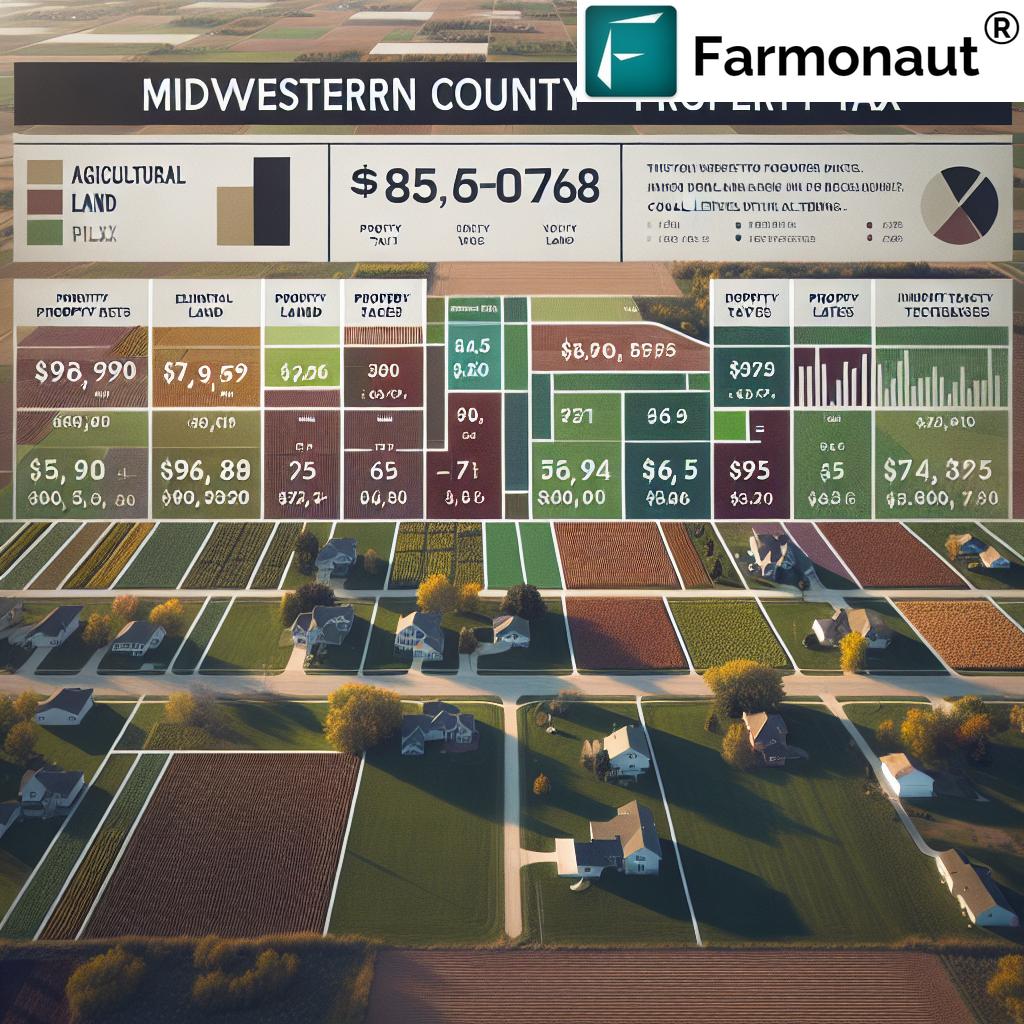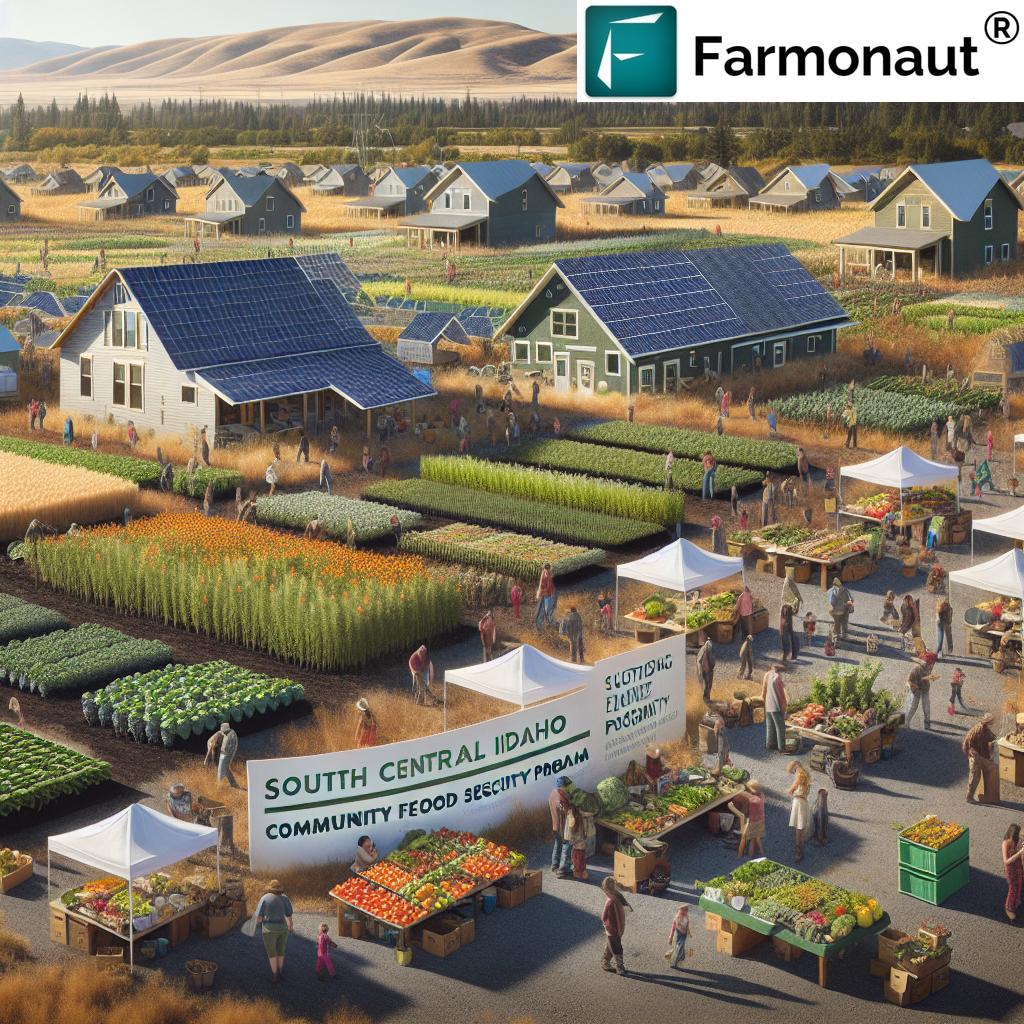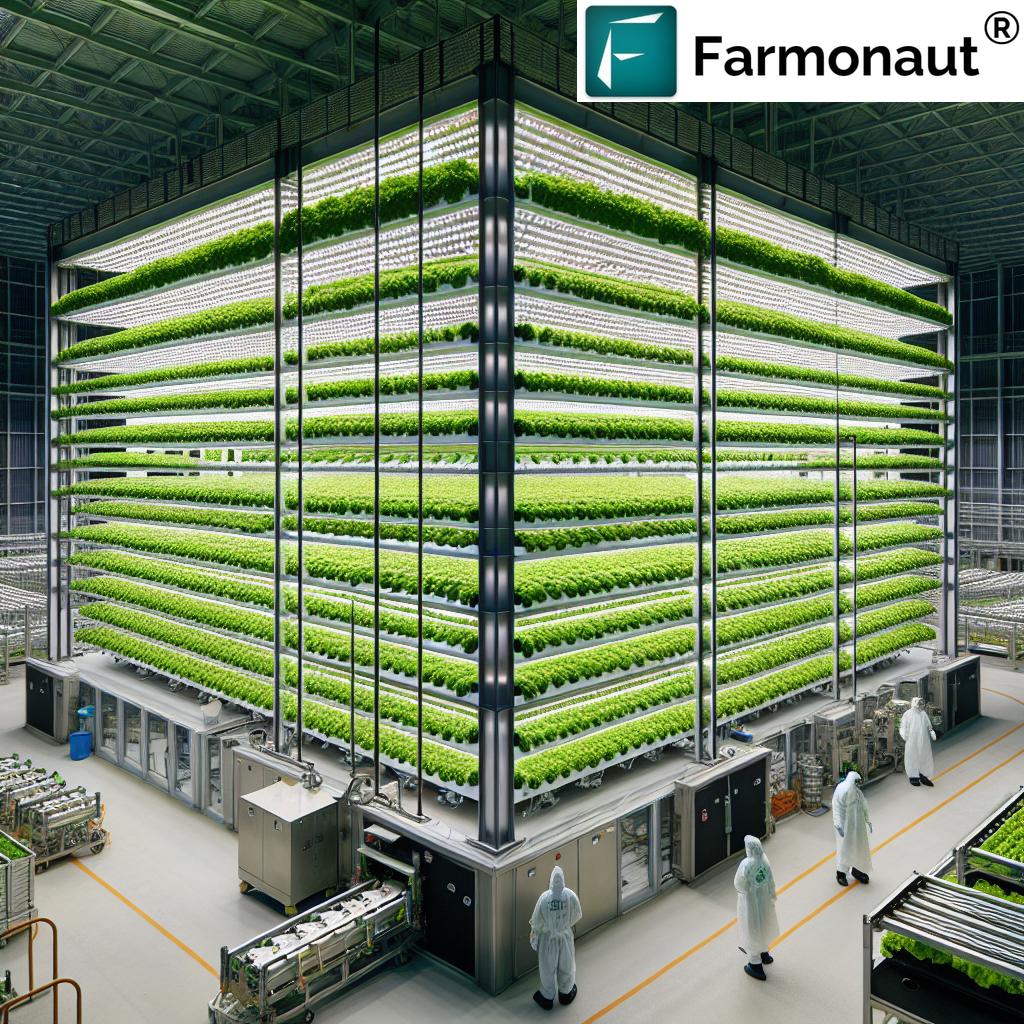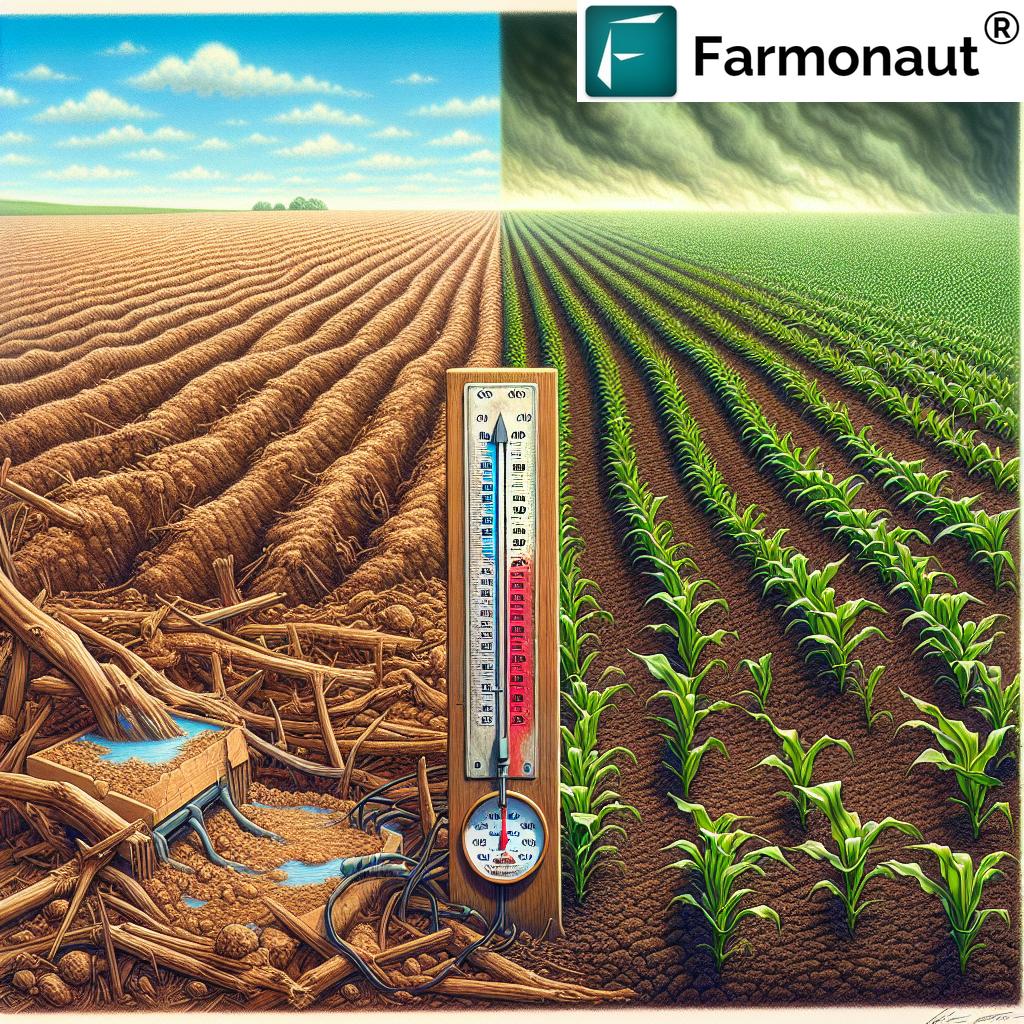Regenerative Agriculture Market Booms in North America 2024!
Meta Description: Discover the rising regenerative agriculture market in North America for 2024. Explore soil health, sustainability, market trends, and key growth drivers behind climate-smart, eco-friendly farming.
“The North American regenerative agriculture market is projected to grow by over 15% annually in 2024.”
What is Regenerative Agriculture?
As concerns about climate change, soil health, and environmental sustainability intensify, the regenerative agriculture market is emerging as a transformative force in North America and globally. But what exactly is regenerative agriculture? Unlike conventional agriculture, which often leads to soil degradation and a decline in biodiversity, regenerative agriculture is an innovative, holistic approach to farming and land management. It focuses on restoring and enhancing the health and biodiversity of agricultural ecosystems, reversing environmental damage, improving soil fertility, and boosting resilience to climate change.
This eco-friendly farming philosophy uses a variety of regenerative agriculture techniques — including reduced tillage, cover cropping, crop rotation, agroforestry, and integrated livestock management — to achieve environmental, economic, and social benefits.
- Regenerative agriculture prioritizes restoring soil health, increasing organic matter, and improving ecosystem resilience.
- It aims to increase biodiversity in farming systems—from soil microorganisms to pollinators and wildlife.
- By harnessing natural processes, it significantly reduces inputs of synthetic chemicals and fossil fuels.
Benefits: How Regenerative Agriculture Boosts Soil Health, Biodiversity, and Sustainability
When we adopt regenerative agriculture practices, we move beyond just sustaining our cropland—we begin restoring soil health and rebuilding resilient, vibrant agricultural ecosystems.
Restoring Soil Health & Fertility
- Increases organic matter: Regenerative methods like cover cropping and reduced tillage help sequester atmospheric carbon in soil, boosting fertility and water retention.
- Reduces erosion and degradation: Plant diversity and ground cover prevent wind and water erosion, curbing loss of valuable topsoil.
- Improves nutrient cycling: Diverse rotations and integrated livestock enhance the availability and recycling of plant nutrients.
Enhancing Biodiversity in Farming
- Promotes diverse ecosystems: Integrating agroforestry and crop rotation supports a variety of plant, animal, and microbial life, strengthening natural pest control and pollination.
- Reduces chemical dependency: Healthy, diverse fields require fewer synthetic inputs, helping protect pollinators and beneficial wildlife.
Driving Sustainability & Climate Solutions
- Carbon sequestration in agriculture: Regenerative practices can make significant contributions to climate change mitigation by increasing carbon capture in soils and perennial vegetation.
- Water management: Healthier soils retain more moisture, reducing drought vulnerability and preserving local water resources.
- Long-term food security: Adopting sustainable farming practices means future generations can count on productive farmland.
Renowned studies have shown that with consistent regenerative methods, soil organic matter can increase by up to 21% within five years—fueling stronger yields and more resilient farms.
“Regenerative farming practices can increase soil organic matter by up to 21% within five years.”
Regenerative Agriculture Market Overview & Trends
The regenerative agriculture market has witnessed rapid growth recently—driven by mounting awareness of sustainability and the urgent need for climate-resilient farming. In 2023, the global market was valued at around USD 1.05 billion, and it’s projected to reach USD 2.9 billion by 2030, marking a robust CAGR of 15.7%.
- Environmental, social, and governance (ESG) investing has fueled significant regenerative agriculture investment from both public and private sectors.
- In North America, regenerative agriculture accounted for 36.2% of global revenue in 2023, making it the world leader in eco-friendly, climate-smart farming models (source).
- Major food corporations are making bold commitments—like pledging millions of acres to regenerative practices by 2030.
This exponential market expansion reflects a rising global demand for sustainability—from food producers and policymakers to consumers seeking sustainably sourced products.
North American Regenerative Agriculture Market Trends Table
| Year | Market Value (USD Million, est.) | Key Growth Drivers | Environmental Impact |
|---|---|---|---|
| 2020 | $650 | Soil health awareness, carbon sequestration, biodiversity conservation, policy pilots | +7% soil carbon, -10% chemical input use |
| 2022 | $840 | Corporate investment, consumer demand, tech adoption | +12% soil carbon, -14% input costs |
| 2024 (est.) | $1,150 |
|
+16% soil carbon, -17% chemical inputs |
| 2026 (forecast) | $1,700 |
|
+19% soil carbon, -21% synthetic input |
| 2030 (forecast) | $2,900 | Net-zero targets, mainstream adoption | +25% soil carbon, -28% chemical input |
Regional Insights: North America Leads the Regenerative Agriculture Market
North America—particularly the United States—remains the clear frontrunner in regenerative agriculture revenue and innovation. Let’s examine the factors behind this dominance:
- U.S. Leadership: The United States has a strong history of agricultural research, early adoption of sustainable farming practices, and robust farm policy incentives. Major corporations have committed large acres to regenerative transformation (e.g., targets of 1 million acres with 500,000 already engaged source).
- Policy Support: The U.S. Department of Agriculture provides funding and guidance for climate-smart commodities and regenerative pilot programs targeting carbon sequestration and environmental conservation.
- Technological Ecosystem: Rapid integration of AI, satellite-based farm management, and blockchain traceability empowers farmers to monitor, verify, and scale regenerative impact.
Europe is forecasted to experience the fastest regional growth in the regenerative agriculture market (16.3% CAGR). Countries like France, Germany, and Spain are spearheading ambitious programs to promote regenerative practices through reduced chemical inputs, carbon sequestration, and incentives for environmentally friendly farming. Discover more about European market growth and the eco-innovations emerging there.
- France: National and EU initiatives target carbon-neutral agriculture by 2050 through landscape-scale restoration.
- Germany: Government subsidies for agroforestry, cover cropping, and organic conversion are accelerating.
- Spain: Water scarcity challenges have prompted rapid adoption of low-input, soil-building systems.
This worldwide momentum signals the shift toward regenerative agriculture Europe-wide and beyond, reshaping global food systems and boosting resilience to climate risks.
Key Growth Drivers in the Regenerative Agriculture Market
Let’s delve deeper into what’s fueling the remarkable expansion of the regenerative agriculture market in North America and around the globe:
- Environmental Sustainability: These practices offer real solutions for soil health, restored biodiversity, and climate change mitigation. The imperative to reverse agricultural land degradation can no longer be ignored.
- Consumer Demand for Sustainable Products: Shoppers increasingly prefer sustainably sourced and environmentally friendly products. Brands are responding by embracing regenerative agriculture transparency and eco-labeling, rewarding restorative farms.
- Technological Advancements: AI, satellite imagery and sensors, and APIs for data integration are making large-scale, precision regenerative management affordable and effective.
- Government and Corporate Support: Federal and state funding, as well as corporate net-zero pledges, provide vital resources for farmer training, education, and conversion costs.
This interplay of environmental imperatives, tech innovation, and shifting consumer awareness guarantees ongoing market growth and tangible environmental improvements.
Regenerative agriculture investment is no longer a niche; it’s a mainstream solution for sustainability.
Market Challenges and Solutions in Regenerative Agriculture
Despite its expansion, the regenerative agriculture market faces critical barriers that we must proactively address:
1. High Initial Investment
- Transitioning requires substantial investment for new equipment, training, and uncertainty before seeing a return on investment.
- Small-scale farmers are especially burdened, but digital management platforms can help spread costs over time.
2. Knowledge and Education Gaps
- Farmers need continuous education and access to expert advisory services for successful adoption of regenerative techniques.
- There’s a growing need for online training resources and localized support networks.
3. Regulatory Hurdles
- Lack of unified standards, inconsistent regulations, and confusion over regenerative certifications slow mainstream expansion.
- Progress is being made on transparent, data-backed eco-labels and traceability solutions through technologies like blockchain.
These challenges are real—but surmountable, especially with the rise of digital farm management platforms, advanced monitoring technology, and comprehensive blockchain traceability tools ensuring transparency and regulatory compliance in supply chains.
Farmonaut Technology: Enabling Environmental Sustainability in Agriculture
As the regenerative agriculture market expands, satellite-based farm management systems such as Farmonaut are essential for scaling, monitoring, and verifying the environmental and economic impacts of regenerative transformation.
Farmonaut delivers a powerful mix of satellite imagery, artificial intelligence, blockchain, and deep learning—all focused on making precision agriculture affordable, accessible, and sustainable for farmers worldwide.
- Satellite Crop Health Monitoring: Get real-time, field-level data on NDVI, soil moisture, areas of crop stress, and resource needs, empowering data-driven decisions for restoring soil health and optimizing inputs (discover Farmonaut’s carbon footprinting).
- AI-Powered Advisory (Jeevn AI): Personalized, real-time agronomic guidance on regenerative practices, weather, and field management—accessible via mobile or web app.
- Blockchain Traceability: Secure, tamper-proof oversight from field to supply chain. Verify the sustainability story behind every crop, boosting consumer confidence (how Farmonaut traceability works).
- Fleet & Resource Management: Reduce operation emissions and optimize machinery utilization—increasing resiliency with precise, field-ready logistics (explore Fleet Management).
- Carbon Footprinting: Track and reduce both direct and supply-chain carbon emissions, providing actionable insights for regenerative agriculture investment and climate-smart compliance (detailed product info).
For smallholder farmers, agribusinesses, government agencies, and corporate clients seeking to unlock regenerative value, Farmonaut’s platform is a scalable solution—no expensive hardware required.
Implementing Success: Core Regenerative Agriculture Techniques
What practical steps can we take to integrate regenerative agriculture techniques into our fields?
- Reduced Tillage: Limit soil disturbance to preserve structure, beneficial fungi, and sequestered carbon.
- Cover Cropping: Keep living roots in the ground year-round for erosion control and organic matter increase.
- Crop Rotation: Break pest cycles, improve nutrient dynamics, and bolster long-term yields.
- Agroforestry: Integrate trees/shrubs with crops and livestock for microclimate regulation and added biodiversity.
- Holistic Livestock Management: Use planned grazing rotation to promote pasture recovery, enhance soil organic matter, and support carbon sequestration in agriculture.
Effective management of inputs—ensuring minimal synthetic fertilizer, responsible water use, and embracing natural synergies—is at the heart of regenerative agriculture. Digital tools help us customize and monitor these techniques at scale.
Tip: Farmonaut’s large-scale farm management app streamlines sustainable practices and monitoring for big-acreage farms.
How Farmonaut Supports Regenerative Agriculture Practices
We understand that every farm is unique, and precision monitoring is crucial for successful adoption of regenerative principles. Here’s how our tools help:
- Satellite-based Crop Health Monitoring: Track changes in vegetation index, soil moisture, and field stress. Use this data to tweak rotation, input use, and mitigation strategies—maximizing yield and minimizing environmental impact.
- AI-driven Advisory & Alerts: Timely, field-specific advice on when to seed cover crops, reduce tillage, or implement rotational grazing—sent directly to your phone.
Need risk management for loans or insurance as you transition to regenerative methods? Farmonaut offers satellite-verified crop risk assessment—cutting fraud and expanding financial access.
- API Access: Developers, researchers, and agribusinesses can integrate Farmonaut’s real-time data and analytics into custom applications for regenerative field trials, carbon markets, or sustainability dashboards. See API details or read the developer docs.
Farmonaut’s mission is to democratize sustainable farm management and make precision agriculture and regenerative practices accessible at any scale, in every region, from smallholder plots to continental agribusinesses.
Latest Developments in Regenerative Agriculture (2024)
-
Rewarding farmers for regenerative agriculture is ‘critical for decarbonising the food sector’ (June 2024)
– Incentive programs and carbon markets are being developed worldwide to reward climate-smart management and measurable sequestration. -
These Cattle Farmers Are Cutting Emissions and Boosting Nature
– New evidence from North America’s livestock sector shows that rotational grazing can build organic matter, restore watershed function, and reduce carbon footprints. -
To tackle climate change we need to make regenerative agriculture the norm, not the exception
– Editorials and policy discussions emphasize mainstreaming regenerative approaches as a climate and food security solution.
As regenerative agriculture becomes a central pillar of farm policy and market innovation—from North America to Europe—the future of environmentally friendly farming looks promising and inclusive.
Farmonaut Subscription Options for Scalable Farm Management
Choosing the right plan is crucial for integrating regenerative and precision agriculture tools into your farming operation or agribusiness. Farmonaut offers flexible subscription models for fields of any size, frequency of data updates, and advanced analytics needs.
Frequently Asked Questions (FAQ): Regenerative Agriculture
What is regenerative agriculture?
Regenerative agriculture is a holistic farming approach that focuses on restoring and improving soil health, biodiversity, and ecosystem services. By prioritizing ecosystem regeneration instead of simply sustaining current conditions, it helps reverse environmental degradation, increase farm resilience, and sequester atmospheric carbon, making agriculture a solution for climate change.
How does regenerative agriculture differ from conventional or sustainable agriculture?
While sustainable agriculture seeks to maintain current soil and productivity levels, regenerative agriculture aims to restore, renew, and enrich the land. Regenerative approaches go beyond minimizing harm—they actively rebuild soil fertility, biodiversity, and ecosystem functions, creating long-term resilience.
What are the main regenerative agriculture techniques?
Key techniques include reduced tillage, cover cropping, diverse crop rotation, agroforestry, and holistic livestock management. These practices work synergistically to improve soil structure, increase organic matter, and restore ecosystem services.
Is regenerative agriculture profitable for farmers?
Yes, in the long term, regenerative agriculture often leads to reduced input costs, improved yields, and new income sources (such as carbon credits or premium prices for sustainable products). However, there may be initial investment costs and learning curves during the transition period.
How does Farmonaut empower regenerative farming?
Farmonaut equips farms of any size with real-time, satellite-based monitoring, AI-driven recommendations, traceability solutions, and carbon footprint tracking. This empowers both experienced and new regenerative farmers to make data-driven decisions, document climate benefits, and access finance, insurance, or sustainability markets.
What is carbon sequestration in agriculture, and why is it important?
Carbon sequestration in agriculture refers to practices that increase the amount of carbon captured and stored in soil and perennial plants. This process helps mitigate climate change by removing CO2 from the atmosphere, while also boosting soil fertility and resilience to weather extremes.
Where can I find more about Farmonaut’s regenerative agriculture products?
Explore Farmonaut’s specific offerings for carbon footprinting, agricultural traceability, crop loan and insurance verification, fleet management, and large-scale, app-based farm management.
Conclusion: Toward a Regenerative, Sustainable, and Profitable Future
As the regenerative agriculture market booms in North America and expands globally, we are witnessing the rise of a restorative force in farming—one that places environmental sustainability, economic resilience, and food security at its core. With advancements in monitoring and management technology, and growing demand for eco-friendly products, regenerative practices can scale to meet the world’s climate and nutrition challenges.
Farmonaut is dedicated to making precision monitoring, traceability, and carbon tracking accessible to farmers, agribusinesses, and governments everywhere—supporting the transition to a holistic, climate-smart, and profitable agricultural system.
Join us as champions of soil health, biodiversity, and sustainability. Start your regenerative journey with Farmonaut today.
Together, we can regenerate the earth—one field, one community, one nation at a time.


















